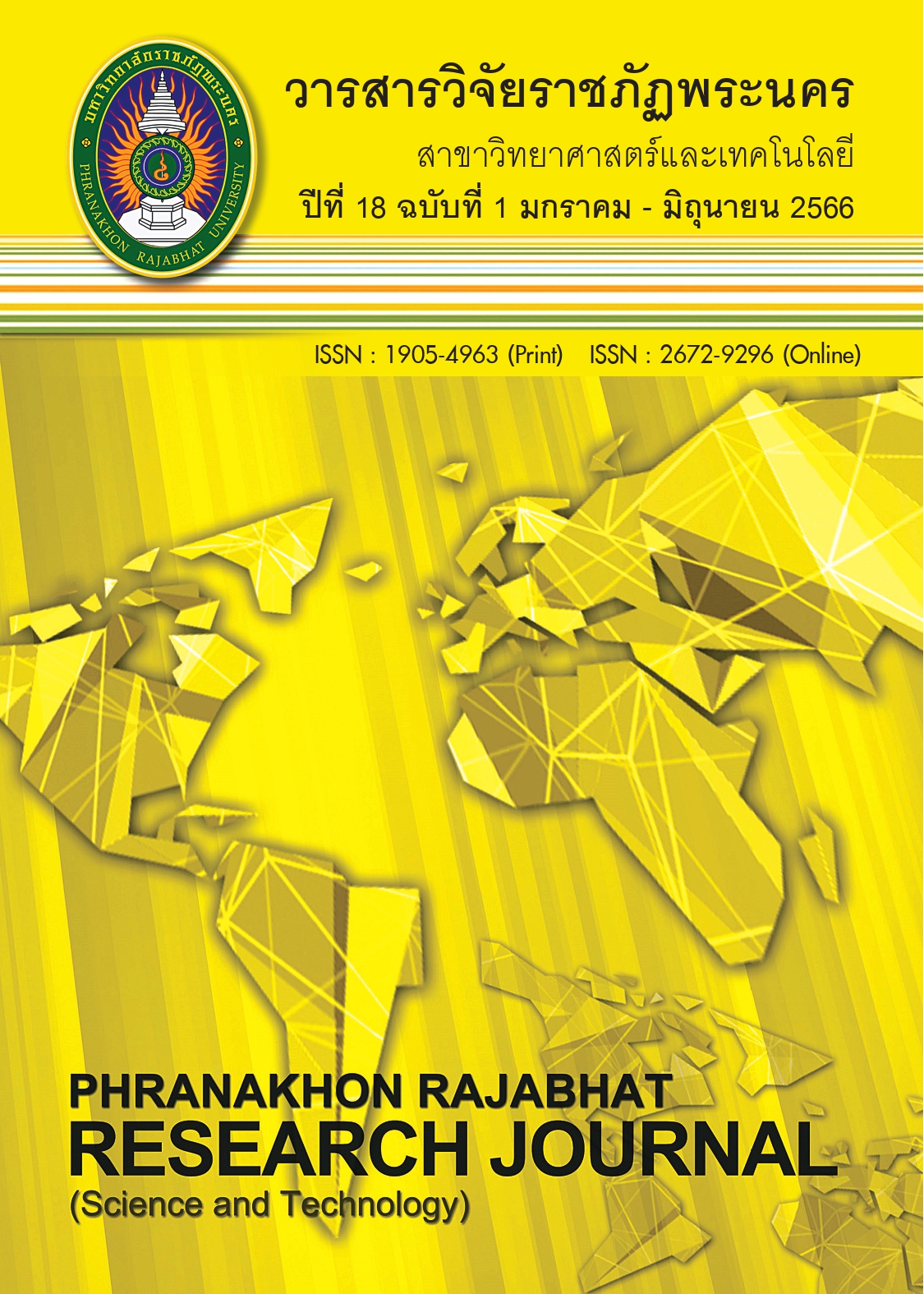THE PRODUCT DEVELOPMENT OF READY TO DRINK SESBANIA FLOWER JUICE USING SUCRALOSE SWEETENER
Keywords:
Sesbania Flowers Drink, Ready-to-Drink, Sesbania Flowers, SucraloseAbstract
Sesbania flowers contain high amounts of carotenoid pigments, and they have antioxidant activity, so they are suitable for developing into a healthy food product. This study was to determine the amount of Sesbania flowers for ready-to-drink Sesbania flower juice products, it was found that the amount of Sesbania flowers 0.60% was suitable for the production and the level of sweetness from sugar at 10 ºBrix was the most accepted by the testers. In the comparison of sucralose as a sugar substitute in ready-to-drink Sesbania flower juice products it was found that the use of sucralose as a sugar substitute was 50% of sugar (by comparison, a relative sweetness) was the most accepted in all aspects by the testers, consist of appearance (7.20), color (7.13), odor (7.03), sweet (7.16) and overall preference (7.09), the 50% sucralose formula was accepted score close to 0% formula (sugar formula/10 ºBrix) and 25% (p>0.05), with a pH value of 6.94, the color values of L (brightness), a* (red) and b* (green) were 23.53, -1.64 and 1.68, respectively. From this recipe, the product was tested for acceptance by general consumers, and it was found that most consumers liked it moderately with a score of 7.65, giving overall acceptance of the product (76%), and they were interested in buying the product (72%). The total cost of production is 4.86 baht/unit, which is the alternative for health beverages, and this product can increase value to local indigenous plants as well
References
Aschariyaphotha, B., Na nakorn A., Wongma A. & Suphirun, N. (2019). Development of Reduced- sugar Chili Jam. The 7th Academic Science and Technology Conference. (In Thai)
Eiamsa-ard, P., Suphrom, N. & Janphet, N.. (2021). Preliminary Identification of β-Carotene in Sesbania Flower (Sesbania javanica Miq.) Extracts and Application in Ice-cream Product. Pathumwan Academic Journal, 11(32). 15-27. (In Thai)
Jakkit, W. & Manokit, R.. (2017). Sesbania Flower Cookies. Home Economics Technology and Innovation. Faculty of Home Economics Technology, Rajamangala University of Technology Thanyaburi. (In Thai)
Kijparkorn, S., Plaimast, H., & Wangsoonoen, S. (2010). Sano (Sesbania javanica Miq.) Flower as a Pigment Source in Egg Yolk of Laying Hens. The Thai Journal of Veterinary Medicine, 40(3), 281-287.
Liaotrakoon, W., Jirasathitanusorn, T., Iam N., & Liaotrakoon, V.. (2018). Effect of Drying Temperatures on Drying Rate, Physical and Antioxidative Properties of Sesbania javanica Mig. Flowers. Rmuti Journal, 11(3): September – December. (In Thai)
Ministry of public health. Department of health. Bureau of nutrition. (2013). Criteria for Healthy Alternative Food Standards for risk groups Patients with diabetes and high blood pressure. Born to Be Publishing. (In Thai)
Na Pattalun, S.. (2016). The use of the sweetener sucralose in Mushrooms Beverage. The 1st Rajamangala University of Technology Suvarnabhumi Nation Conference. (In Thai)
Petlomtong, P., & Ratanatriwong, P.. (2014). Sugar and Sweetener: The Current Consumption Trend. King Mongkut's Agricultural Journal, 32(1), January - April. (In Thai)
Saulo, A.A.. (2005). Sugars and Sweeteners in Foods. (online) Available: https://scholarspace.
manoa.hawaii.edu/items/5e55f102-0c55-45d6-a52d-6ceac3cfc1cb (2022, 1 April).
The institute of Thai traditional medicine. (2019). Sesbania: local vegetables, Thai food. (online) Available: https://ittm.dtam.moph.go.th (2022, 1 April). (In Thai)
The Ministry of Public Health. (1998). Notification of the Ministry of Public Health (no. 182) B.E. 2541 re: nutrition labelling. In:, editor. Notification of the Ministry of Public Health. Nonthaburi: The Ministry of Public Health (1979). p. 165–203. (In Thai)
Downloads
Published
Issue
Section
License

This work is licensed under a Creative Commons Attribution-NonCommercial-NoDerivatives 4.0 International License.
โปรดกรอกเอกสารและลงนาม "หนังสือรับรองให้ตีพิมพ์บทความในวารสารวิจัยมหาวิทยาลัยราชภัฏพระนคร สาขาวิทยาศาสตร์และเทคโนโลยี" ก่อนการตีพิมพ์




